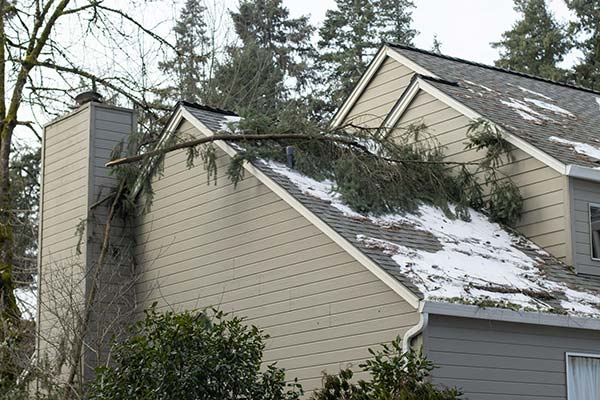Winter months bring more than just cold temperatures and snow. They can also lead to unexpected flooding risks for homeowners. As snow melts and ice jams form, the possibility of water damage becomes a real concern. Heavy winter rains add to the problem, increasing the risk of floods that can affect your home’s safety and comfort.
Preparing for potential winter floods is crucial. Understanding what causes these floods and knowing how to protect your home can make a big difference. From preventing frozen pipes to using sump pumps, there are a variety of effective measures you can take. It’s important to identify the flood-prone areas in your home and take action to prevent water from causing extensive damage.
Planning ahead is key to minimizing the impact of winter flooding. By putting the right precautions in place, you can safeguard your property and ensure your family’s safety. Let’s explore the best strategies to protect your home from the risks that winter floods present.
Understanding Winter Flood Risks
Winter floods often arise from several common causes that homeowners should be aware of. Snowmelt is a major contributor, especially when a rapid temperature rise causes snow to melt quickly. This can lead to over-saturated ground and overflowing water sources, such as rivers and ponds. Ice jams occur when river ice breaks up and piles against bridges or bends, obstructing water flow and causing flooding upstream. Additionally, heavy rainfall during winter months can fill waterways already swollen from melting snow, raising the risk of floods even more.
Identifying flood-prone areas within your home is an essential step in preparing for potential flooding. Examine your basement and lower levels, as these are typically the most vulnerable parts of a house when water levels rise. Look for water stains or small leaks that might indicate past issues. Pay attention to your home’s exterior surroundings like low spots in your yard or near the foundation, which can collect water. Understanding these risks allows for better preparation and targeted flood prevention, safeguarding your home during the coldest months.
Preparing Your Home for Potential Flooding
Getting your home ready for potential flooding involves a few crucial steps that focus on protection and prevention. Begin by winterizing your plumbing system to avoid frozen pipes. Insulate pipes in unheated areas, such as basements and crawl spaces, using foam pipe insulation to keep them from freezing and bursting. It’s also wise to keep a slow trickle of water running through faucets during extreme cold spells, as moving water is less likely to freeze.
Inspecting and maintaining gutters, downspouts, and drains is vital to handling heavy water flow. Clear away leaves and debris to prevent clogs that can cause water to overflow and pool around your home’s foundation. Ensure that downspouts direct water at least several feet away from the house to reduce the risk of foundation leaks. Regular maintenance of these systems can significantly lower the chance of flooding problems during winter.
By taking these preventive steps, you not only make your home safer but also minimize the stress and expense associated with water damage and repairs. Prior planning and regular maintenance are key to keeping your home protected from the threats of winter flooding.
Essential Flood Prevention Measures
To protect your home from potential flooding, consider implementing a few key flood prevention measures. Installing sump pumps is a great way to keep your basement dry by automatically pumping out excess water during periods of heavy rainfall or snowmelt. Ensure your sump pump has a battery backup for use during power outages. Backwater valves are another important installation to prevent sewage from backing up into your home through the plumbing during intense weather events.
Utilizing sandbags and temporary barriers offers flexible, short-term solutions for areas vulnerable to flooding. Sandbags can be arranged around doorways and other entry points to divert water flow. Similarly, portable flood barriers can act as robust defenses, easily deployed in preparation for a storm. These measures, while temporary, add an extra layer of protection, keeping water at bay and reducing the risk of damage to your property.
Creating an Emergency Flood Response Plan
Having a solid emergency flood response plan can significantly reduce panic and confusion during a flood event. Start by establishing a family communication plan to ensure everyone’s safety and accountability. Decide on a safe meeting place and keep contact numbers handy. Practice evacuation drills so everyone knows what to do in an emergency.
Safeguarding important documents and valuables is also crucial. Keep essential items like passports, insurance papers, and irreplaceable keepsakes in waterproof bags or containers. Store them in a location that is easy to access during an emergency. Additionally, compile an emergency kit, including necessities like water, non-perishable food, a flashlight, and a first aid kit.
Conclusion
Winter floods pose a serious threat, but with careful planning and timely action, you can greatly minimize the risk to your home. Understanding the potential sources of flooding and preparing effectively can provide peace of mind. Regular maintenance of your property, implementing key preventive measures, and having an emergency plan can safeguard against unexpected water damage. As the winter season brings unpredictable weather challenges, being proactive is the best way to protect your property and loved ones.
If you are concerned about winter flood risks or need help with water damage restoration, JCC Restoration LLC is here to assist. We specialize in post-disaster cleanup and structural drying, helping you recover quickly and efficiently. Our team can guide you in safeguarding your home from future floods, ensuring it remains safe and secure. Contact us today to learn more about our comprehensive services and how we can help you prepare for winter’s challenges.





